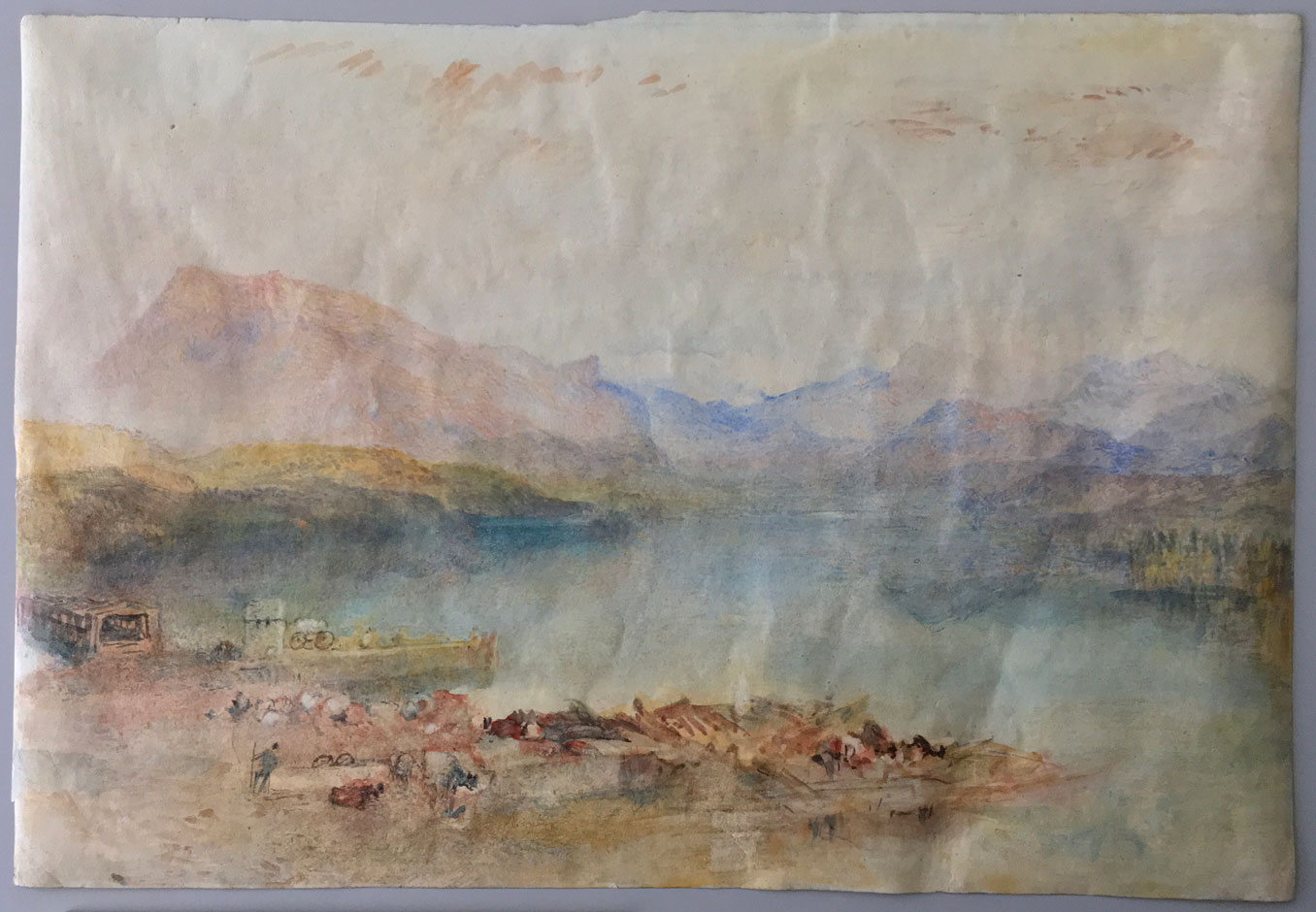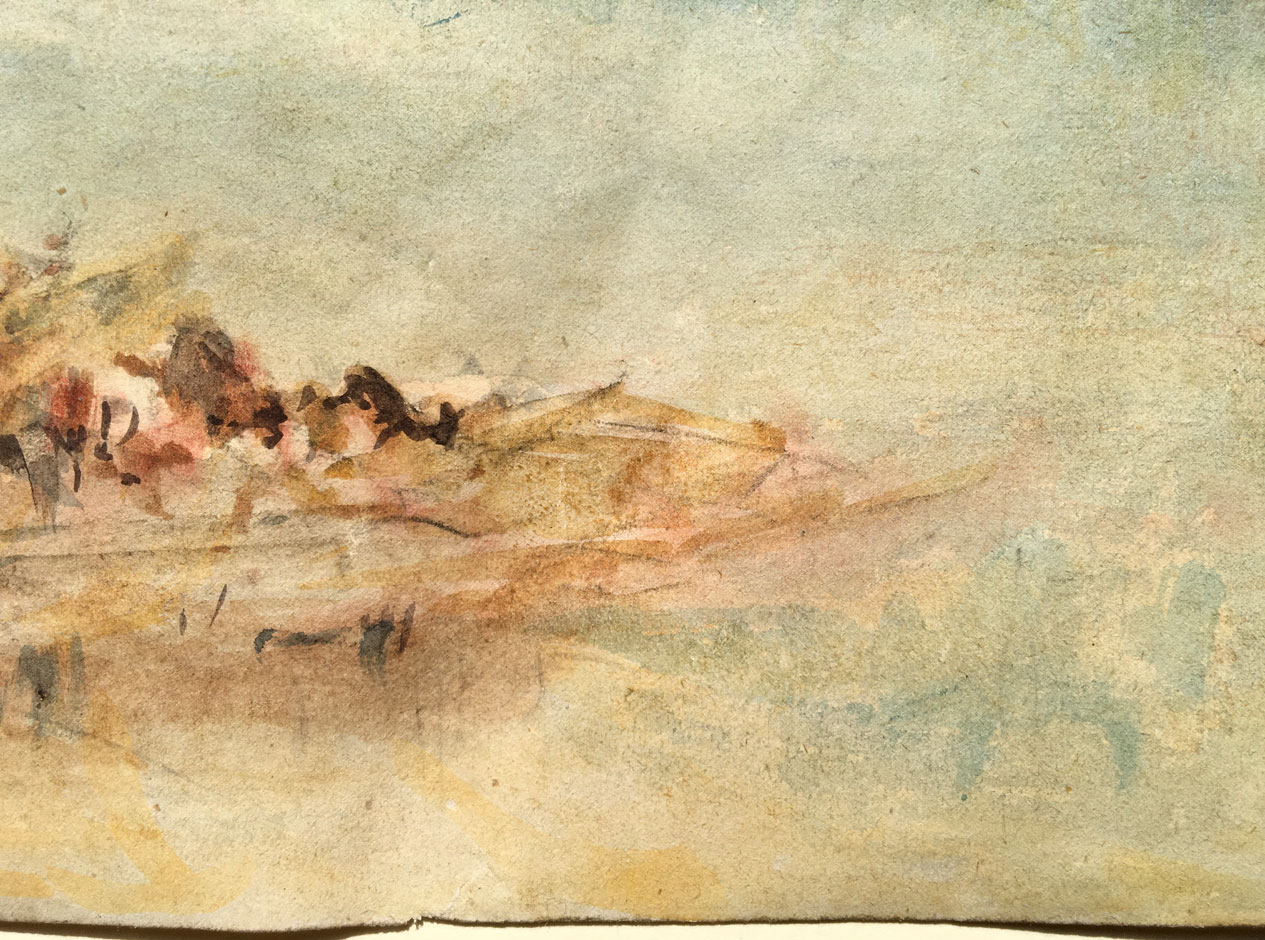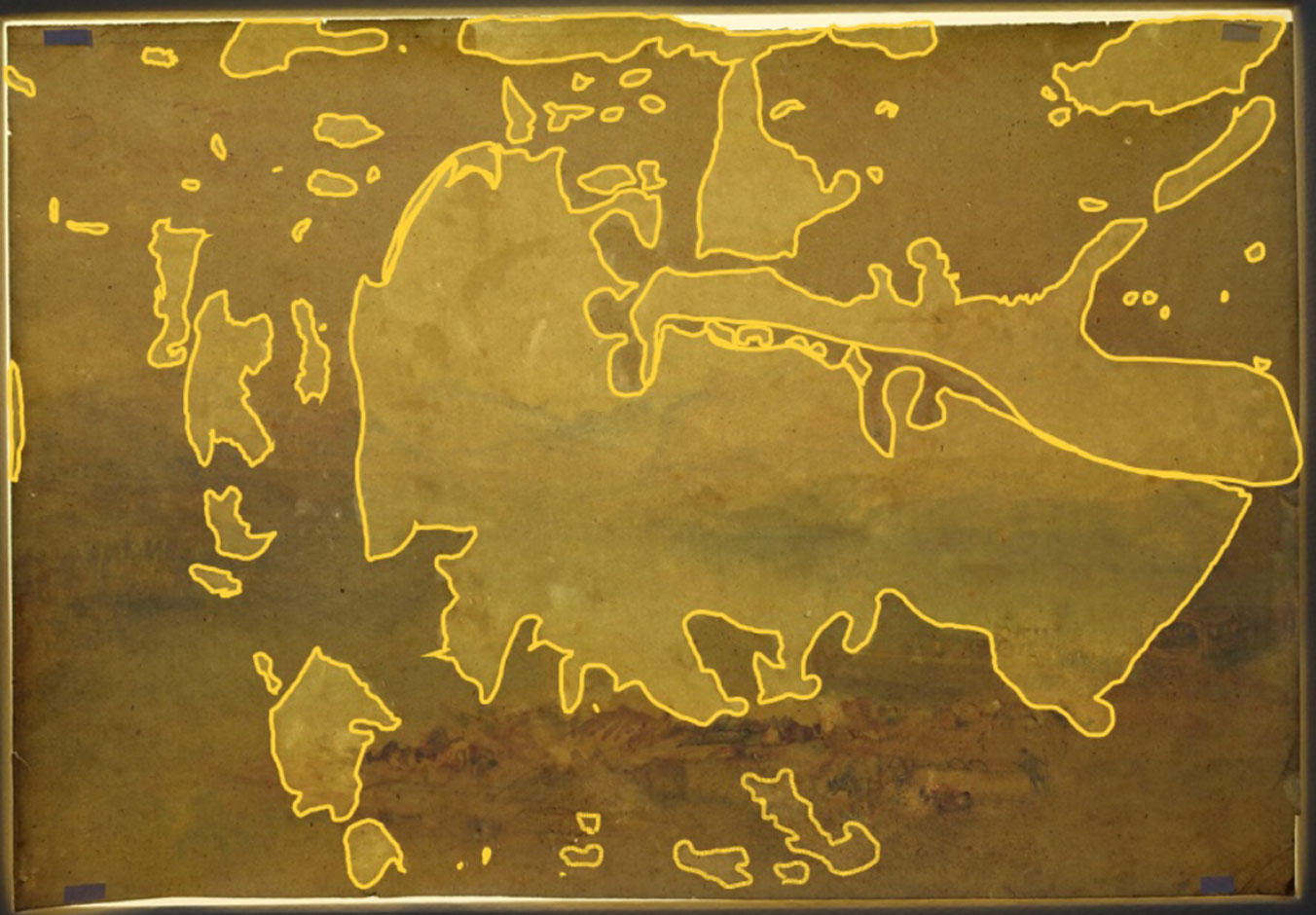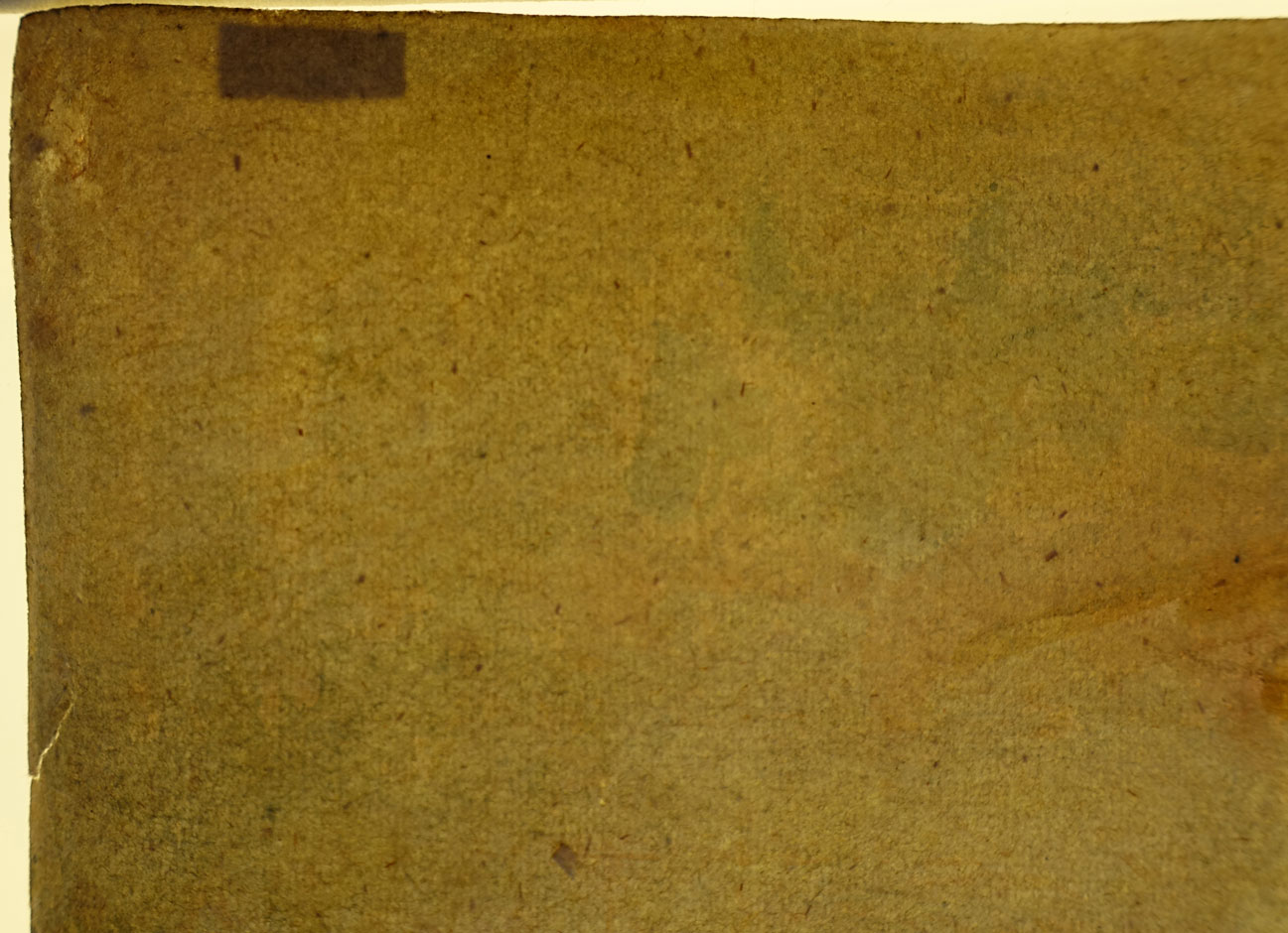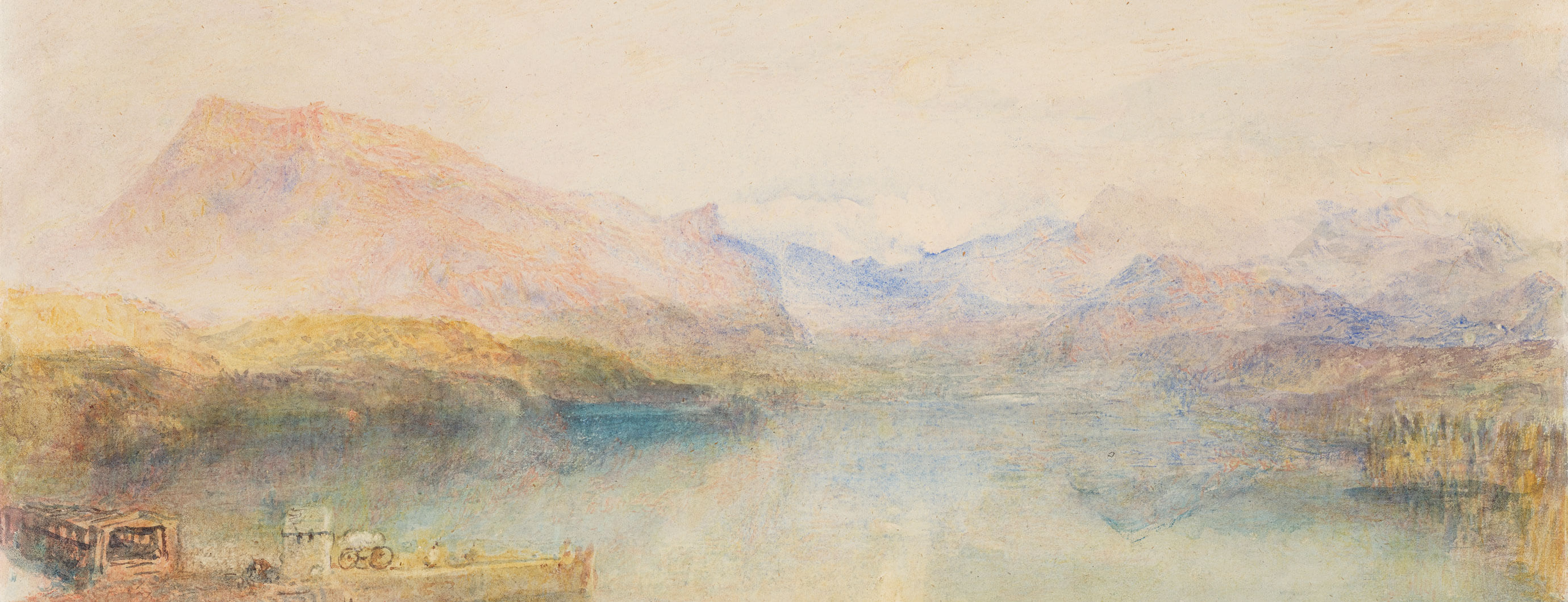
Restoration of Turners Watercolour
The fantastic watercolour was acquired for the collection at the end of the exhibition Turner. The Sea and the Alps 2019 for the collection of the Kunstmuseum Luzern. For the exhibition ABC of Images Reading the Collection, it has been examined in detail and restored. This most expensive purchase in the history of the Kunstmuseum Luzern was made possible thanks to the generous support of the Gottfried-Keller-Stiftung (Swiss Confederation) and numerous other foundations and private individuals. Thanks to the restoration work carried out last year, the painting is once again in optimal condition. The restoration also enabled new insights into the work’s history and painting technique.
Painting technique
J.M.W. Turner used watercolour and gouache to capture the Rigi and Lake Lucerne, that is, the Vierwaldstättersee. He applied the colours in washes, i.e., highly diluted and transparent layers. An inspection of details reveals that the artist sketched out the composition in pencil. He then applied the colours with different brushes and smudged the edges with a cloth or the ball of his hand. J.M.W. Turner’s fingermarks, which must have occurred as the painting dried, are also still visible on the lower left edge of the work.
Painting on Paper
The picture is painted on vellum paper. This is an evenly structured, smooth paper resembling parchment. Paper is a sensitive and fragile material, with light exposure and fluctuations in temperature negatively effecting its lifespan. For this reason, the watercolour The Rigi, Lake Lucerne, Sunset is normally only on display for a limited time. The period of storage in between gives the watercolour painting a regenerative break from light exposure
Distortions in the paper and a crease are visible on the photograph taken with oblique lighting. This crease runs diagonally downwards from the top right-hand corner across the entire painting. To reduce these distortions, the watercolour was carefully moistened in a climate-controlled chamber, covered with blotting paper and a foil and held down with weights.
